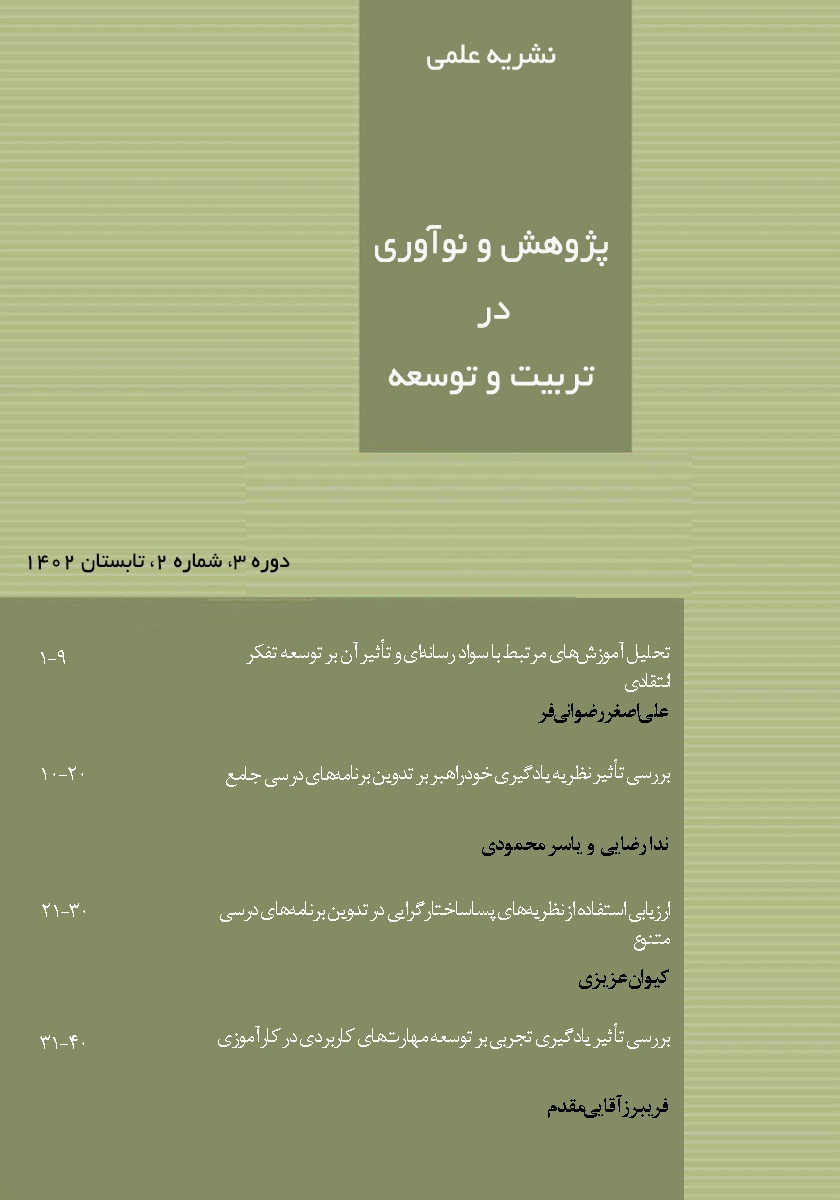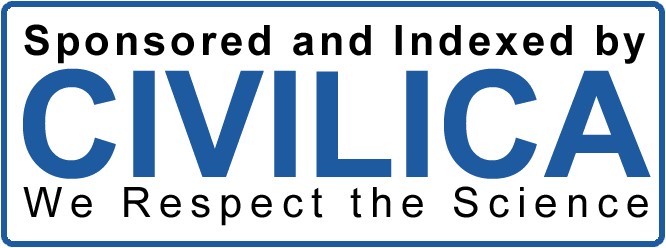Determining the differences in the ability of Iranian students based on their response styles in the TIMSS Grade 8 science test (2011, 2015, and 2019)
Keywords:
Response styles, TIMING 2011, 2015 and 2019 tests, question parameters, individuals' abilitiesAbstract
The present study aimed to identify the differences in the ability of Iranian students based on their response styles in the TIMSS (Trends in International Mathematics and Science Study) Grade 8 science test for the years 2011, 2015, and 2019. This study examined various response styles, including extreme, moderate, and acquiescent styles, as well as their effects on item psychometric parameters and individual abilities. Data were analyzed using various Item Response Theory (IRT) models. The results showed that in the 2011 TIMSS Grade 8 science test, individuals with a typical response style exhibited the highest ability, followed by those with a moderate response style. The lowest ability was observed among individuals with an acquiescent response style. In the 2015 TIMSS Grade 8 science test, individuals with an extreme response style had the highest average ability among all groups, suggesting their superior ability compared to other individuals. Furthermore, in the 2019 TIMSS Grade 8 science test, there was no significant difference in the abilities of individuals with a moderate response style and those with an acquiescent response style (P > 0.05). However, a statistically significant difference was found between the abilities of individuals with an extreme response style and those of other groups (P < 0.05). A statistically significant difference was also observed between the abilities of individuals with a typical response style and those with an acquiescent response style. These findings can contribute to the improvement of standardized test design, reduction of cultural biases, and provision of strategies for more accurate assessments at both national and international levels.
Downloads
References
Bhutoria, A., & Aljabri, N. (2022). Managerial Practices and School Efficiency: A Data Envelopment Analysis Across OECD
and MENA Countries Using TIMSS 2019 Data. Large-scale Assessments in Education, 10(1).
https://doi.org/10.1186/s40536-022-00147-3
Chen, X. (2022). The effects of individual-and class-level achievement on attitudes towards mathematics: An analysis of Hong
Kong students using TIMSS 2019. Studies in Educational Evaluation, 72, 101113.
https://doi.org/10.1016/j.stueduc.2021.101113
Dibek, M. I., & Cikrikci, R. N. (2021). Modelling of the Attitude-Achievement Paradox in TIMSS 2015 with Respect to the
Extreme Response Style Using Multidimensional Item Response Theory. International Journal of Progressive Education,
(2), 194-209. https://doi.org/10.29329/ijpe.2021.332.12
Ismail, M. E., Samsudin, M. A., Amin, N. F. M., Kamarudin, N., Daud, K. A. M., & Halim, L. (2018). Contributing factors to
science achievement in TIMSS Malaysia: Direct model and indirect model. International Journal of Engineering &
Technology, 7(4.30), 423-428. https://doi.org/10.14419/ijet.v7i4.30.22354
Khalilpour, H. (2024). Selecting an Appropriate Cognitive Diagnostic Model for Eighth Grade Math Questions: TIMSS 2019
Study. Journal of Psychological Dynamics in Mood Disorders (PDMD), 3(2), 10-22.
https://doi.org/10.22034/pdmd.2024.462389.1118
Khorramdel, L., von Davier, M., & Pokropek, A. (2019). Combining mixture distribution and multidimensional IRTree models
for the measurement of extreme response styles. British Journal of Mathematical and Statistical Psychology, 72(3), 538-
https://doi.org/10.1111/bmsp.12179
Kim, N., & Bolt, D. M. (2021). A Mixture IRTree Model for Extreme Response Style: Accounting for Response Process
Uncertainty. Educational and psychological measurement, 81(1), 131-154. https://doi.org/10.1177/0013164420913915
Liu, M., Harbaugh, A. G., Harring, J. R., & Hancock, G. R. (2017). The effect of extreme response and non-extreme response
styles on testing measurement invariance. Frontiers in psychology, 8, 726. https://doi.org/10.3389/fpsyg.2017.00726
Martin, M. O., von Davier, M., & Mullis, I. V. (2020). Methods and Procedures: TIMSS 2019 Technical Report. International
Association for the Evaluation of Educational Achievement.
Meadows, J. (2023). Planning an Informal STEM Event? Try the Assets-Based Approach to Planning and Research for
Informal STEM Events. Journal of Research in Science Mathematics and Technology Education, 1-16.
https://doi.org/10.31756/jrsmte.711
Saphira, H. V. (2024). Metaverse: A Paradigm Shift in STEM Education for Science Learning Beyond the Review. E3s Web
of Conferences, 482, 04004. https://doi.org/10.1051/e3sconf/202448204004
Tsupros, N., Kohler, R., & Hallinen, J. (2009). STEM education: A project to identify the missing components. Intermediate
Unit, 1, 11-17.
Ulitzsch, E., Lüdtke, O., & Robitzsch, A. (2023). The Role of Response Style Adjustments in Cross‐Country Comparisons-A
Case Study Using Data from the PISA 2015 Questionnaire. Educational Measurement: Issues and Practice.
https://doi.org/10.1111/emip.12552
Wang, L. H., Chen, B., Hwang, G. J., Guan, J. Q., & Wang, Y. Q. (2022). Effects of digital game-based STEM education on
students' learning achievement: a meta-analysis. International Journal of Stem Education, 9(1), 1-13.
https://doi.org/10.1186/s40594-022-00344-0
Wu, M. (2009). A Comparison of PISA and TIMSS 2003 Achievement Result in Mathematics. Prospect, 39(1), 33-46.
https://doi.org/10.1007/s11125-009-9109-y
Xu, W., & Ouyang, F. (2022). The Application of AI Technologies in STEM Education: A Systematic Review From 2011 to
International Journal of Stem Education. https://doi.org/10.1186/s40594-022-00377-5
Yoshino, A. (2012). The Relationship Between Self-Concept and Achievement in TIMSS 2007: A Comparison Between
American and Japanese Students. International Review of Education, 58(2), 199-219. https://doi.org/10.1007/s11159-012-
-7
Downloads
Published
Issue
Section
License
Copyright (c) 2023 Journal of Study and Innovation in Education and Development

This work is licensed under a Creative Commons Attribution-NonCommercial 4.0 International License.











